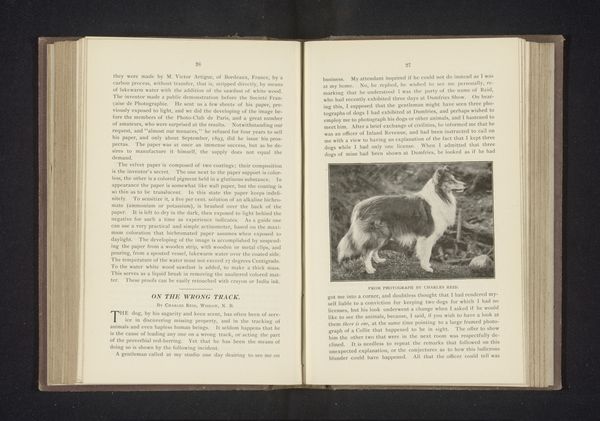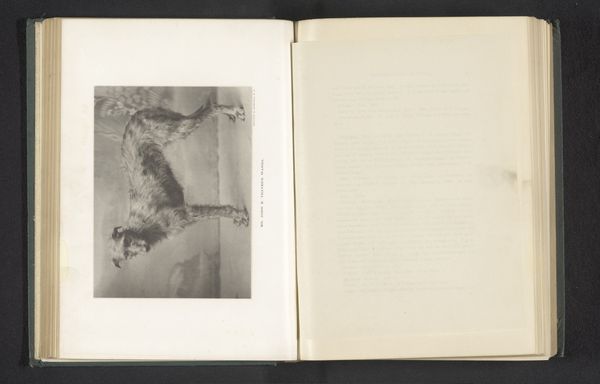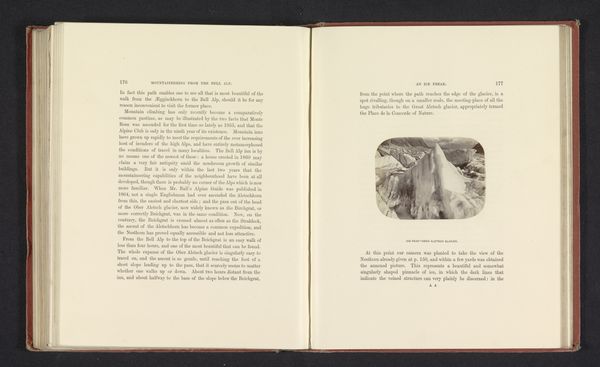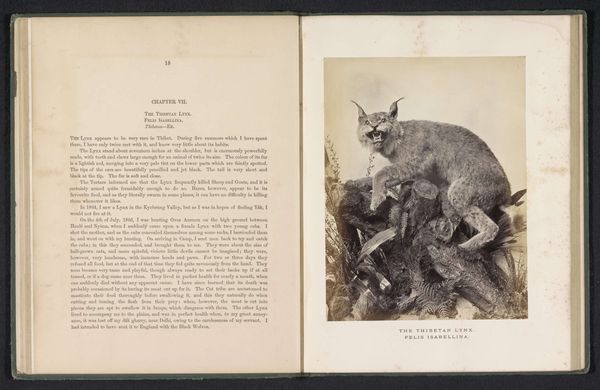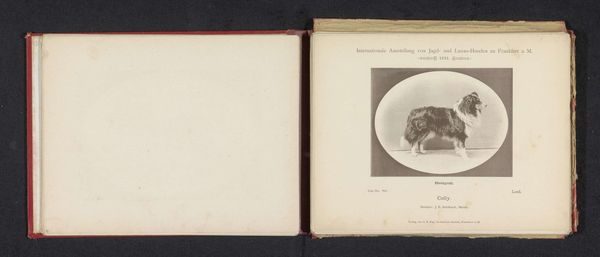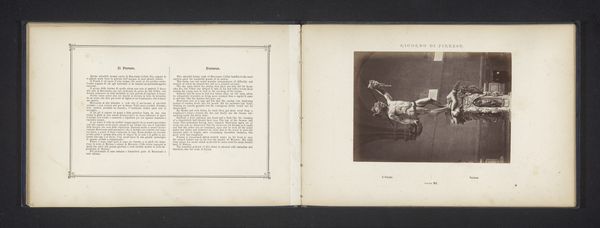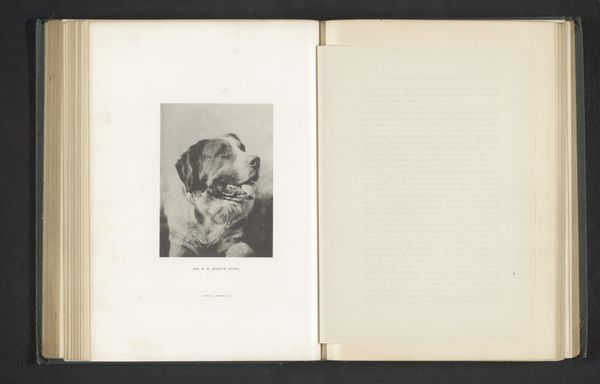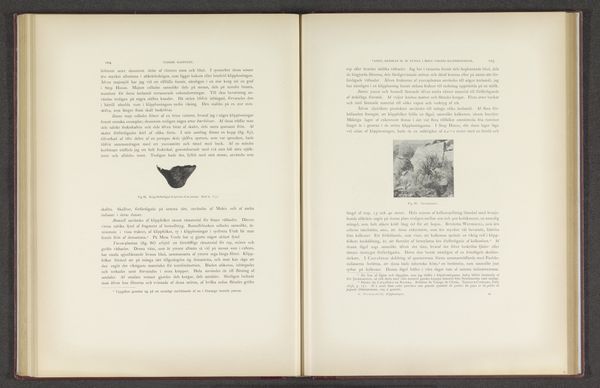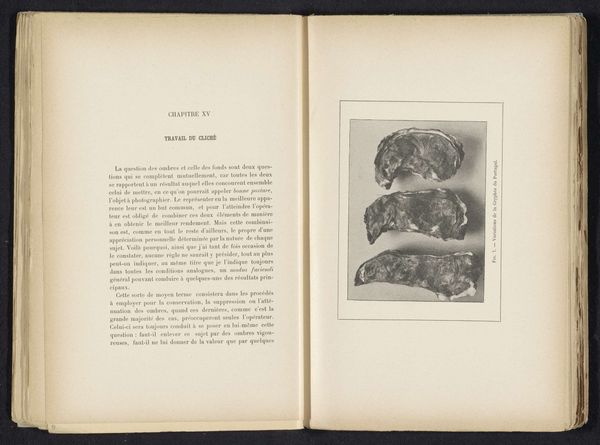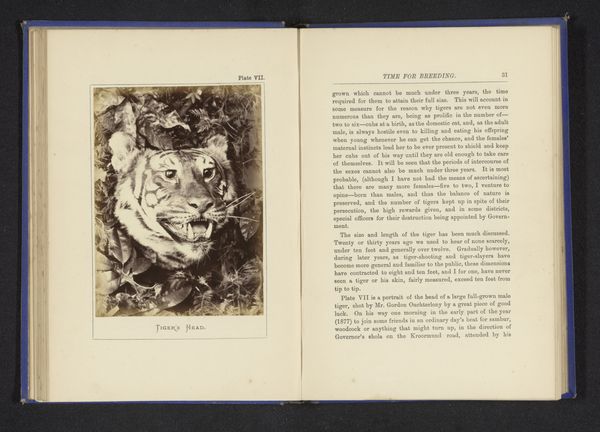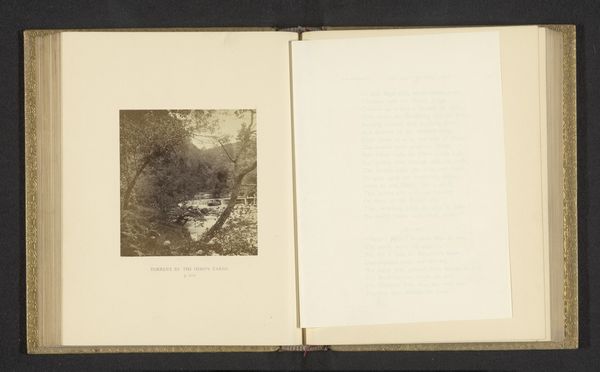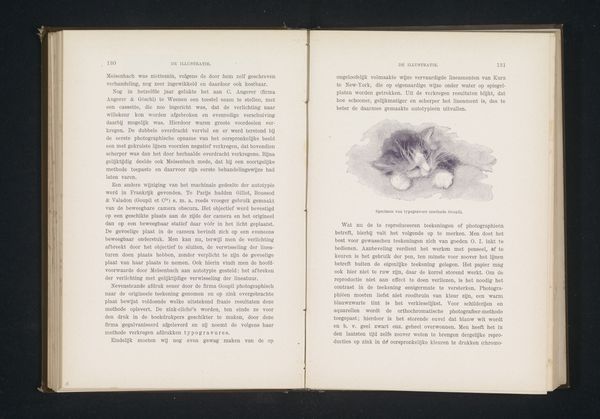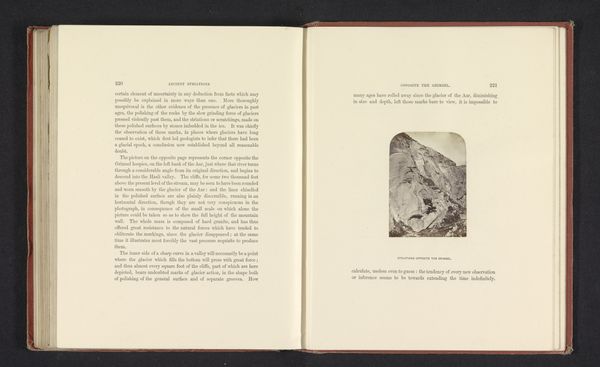
print, photography
#
portrait
#
animal
# print
#
photography
#
realism
Dimensions: height 197 mm, width 145 mm
Copyright: Rijks Museum: Open Domain
Curator: This photographic print, entitled "The Wild Dog," appeared before 1869, by Arthur Lucas, is quite compelling. It shows the dog in a portrait style, realistically. The circular frame focuses our attention intensely on the dog’s snarling expression. What do you make of its formal elements? Editor: The high contrast in the monochrome palette makes the dog's expression really pop out, doesn't it? It also directs the viewer to the light source from above, that strikes the face and seems to intensify its features. But how does this technical proficiency add to the understanding of the subject? Curator: Precisely! The stark tonal range and composition draw attention to the textural nuances evident in its fur and the precise lines of its open mouth. Look closer: Notice how the artist captured the fine details and shapes that highlight the very animal nature. What assumptions can you make from its aesthetic features? Editor: I suppose that these observations and minute renderings may suggest that beyond its mere appearance as "just a photograph of an animal," that its formal construction may allow it to also function as a symbol. That its animal features may have an additional connotation. I'm seeing the piece a little bit differently now, what else do you notice about the print? Curator: The very meticulous construction forces one to consider the form itself. I was initially concerned about the apparent detachment in isolating this creature within a clean, bounded form and wonder if its animalistic properties, such as strength, can be perceived beyond just being 'feral.' Editor: Thanks, seeing the piece from a more structural standpoint and looking closely at each element has broadened my appreciation and I can now see the way in which one might think about the artistic construction in the context of any symbolism that it holds.
Comments
No comments
Be the first to comment and join the conversation on the ultimate creative platform.
